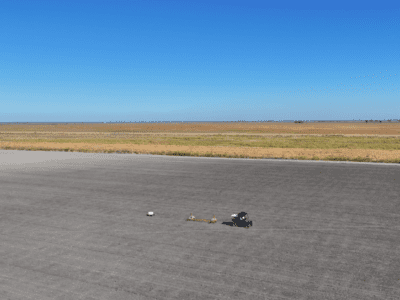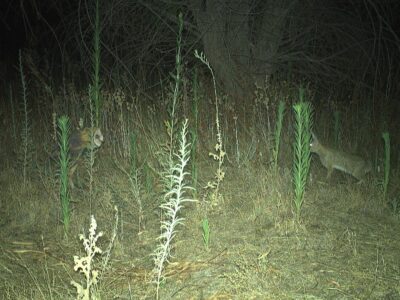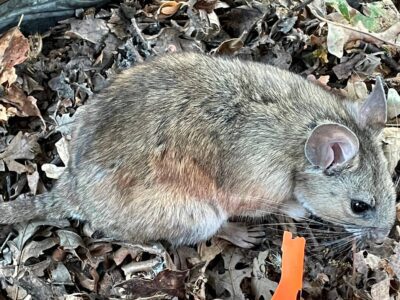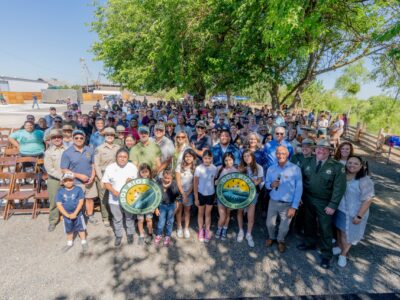Tractors, pipes and hoses, neat rows of seedlings, and milk cartons: bringing new life to rivers means borrowing heavily from farming practices in one of the most productive agricultural areas on Earth. But unlike farms, River Partners restoration projects are designed to become entirely self-sustaining forests in just three years. Time-tested agricultural practices are essential to our success.

River Partners revitalizes ecosystems while carefully stewarding private and public funding. “Farmers are doing all of this for a profit,” says Stephen Sheppard, River Partners’ director of operations. “The methods they have developed to prevent weeds and maintain their crops are the most cost-effective possible. If they’ve already figured out the most efficient ways to grow crops on a large scale, why shouldn’t we use them too?”
Milk cartons
Almost all of our plants start life inside a milk carton. “Without them, we couldn’t effectively do our weed control and it would drastically reduce our plant survival,” says Sheppard. A young plant fresh from the nursery may not be prepared to stand up to the wind or larger herbivores like deer and geese, and cartons also help shield them from herbicide drift. The milk carton serves as a first layer of protection, giving our plants time to become established before they need to face these threats.
The presence of milk cartons also helps our field teams see which plants belong on the site, and which ones don’t. Since it’s easy to spot a new plant that looks identical to one in a milk carton, we can quickly identify which plants are native recruits and which are weeds. Cartons can even prevent weeds from growing at all — River Partners puts about an inch of wood shavings into the bottom of each milk carton, which acts as a mulch, holding in moisture and keeping other seeds from sprouting.
So why milk cartons and not some other container? The milk cartons River Partners uses are often misprints, destined for landfills, so we’re not creating waste. Because a milk carton is white inside, light bounces around inside of it so the plant still gets plenty of sun without overheating like it might in a clear plastic tube. Milk cartons are biodegradable and flexible, allowing the plant to break out when it is large enough, leaving the remnants behind to become part of the soil.
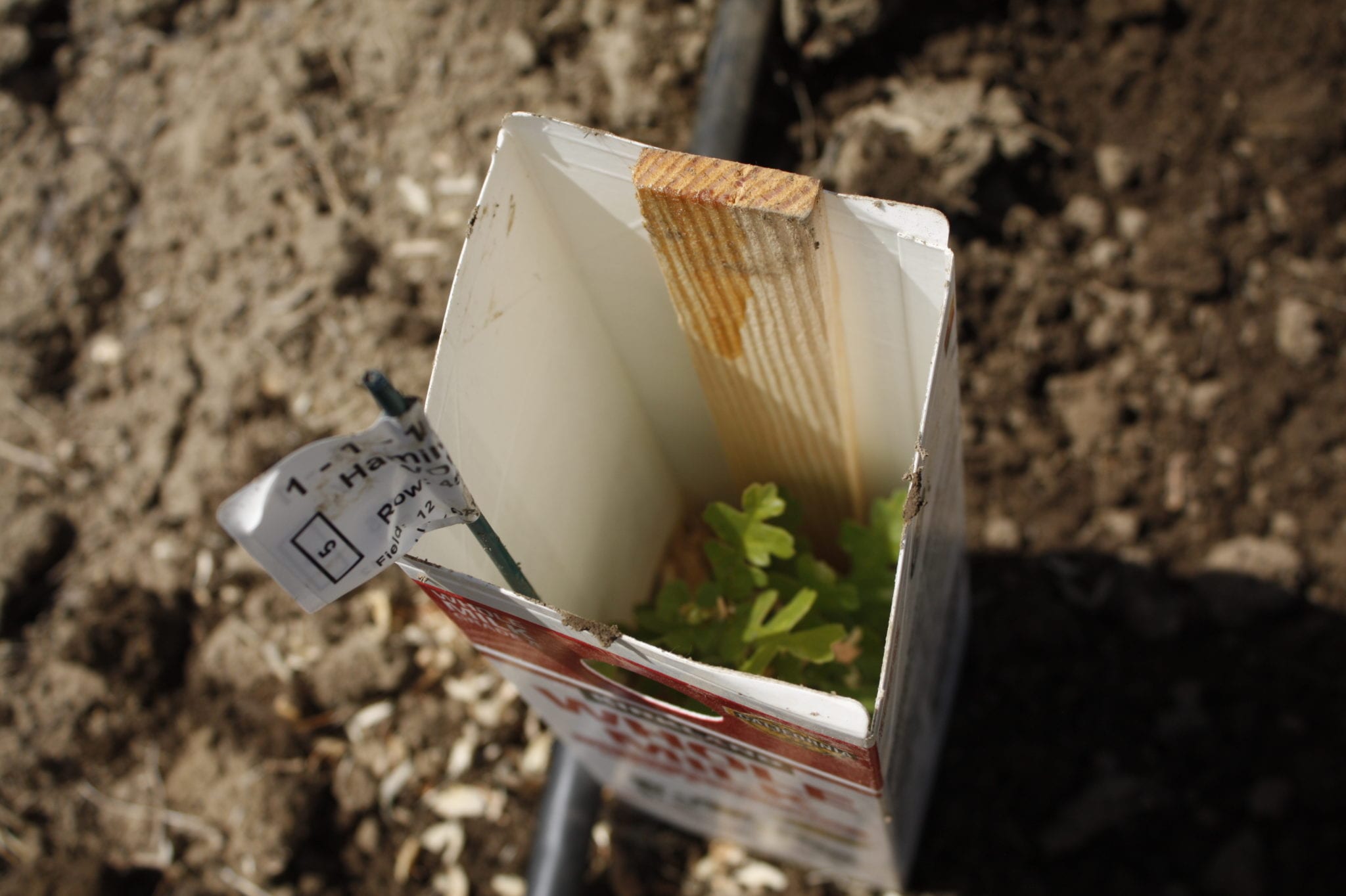
Rows and Irrigation
Rows make it simple for River Partners to manage large-scale projects. Rows are easy to maintain and give us the ability to map each plant’s location. River Partners makes sure our rows are just far enough apart for maintenance vehicles to come through. During planting, tractors with trailers full of plants can drive down the rows, which makes the process fast and efficient.
Rows also make it easy to irrigate. For the first three to five years, the vast majority of our sites are drip or flood irrigated. River Partners uses the same irrigation equipment as local farms, which means when we hire staff with a background in agriculture for contract labor, they are already familiar with the tools we use. Irrigation is extremely important for young plants as it lets them develop a large root system that extends yards-deep into the earth. This ensures our investment of time, money, and effort won’t go to waste in drought years. It also means that after those three to five years of irrigation, our plants should have roots deep enough to reach the water table, even if it drops.
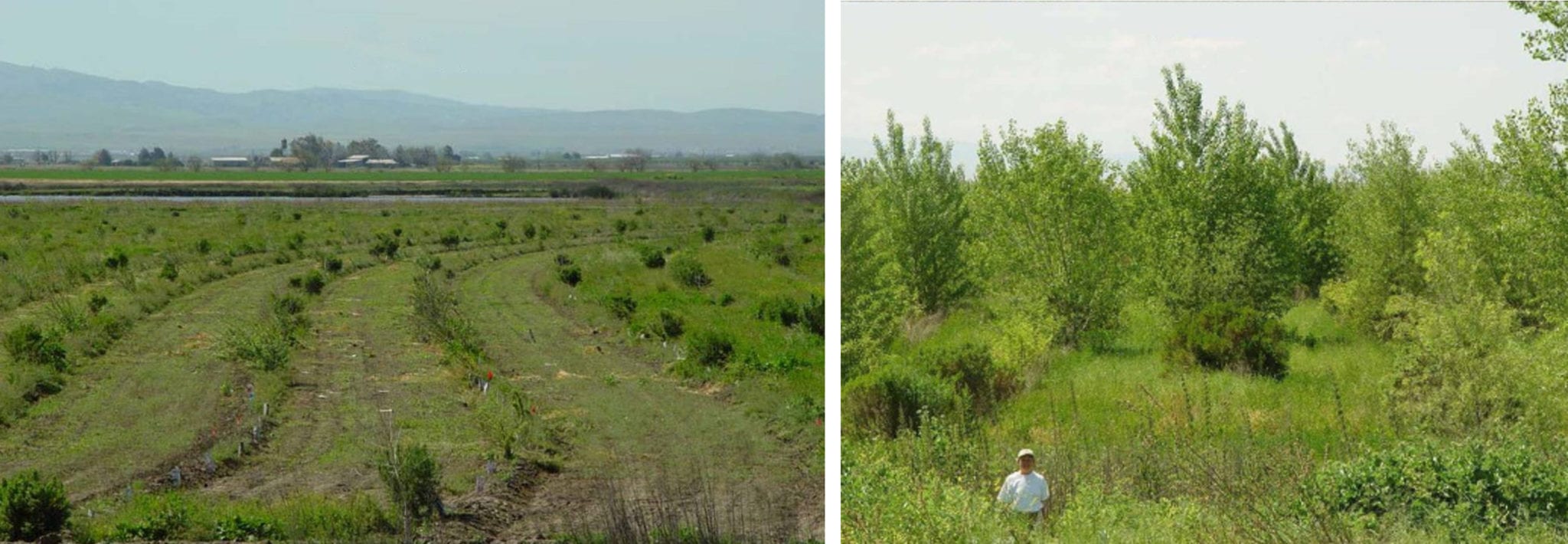
Weed Control
Weeds are a persistent problem on every restoration site, and many of the most troublesome species are non-native. One of the most effective ways to control weeds is to exhaust the seed bank. For large, 100+ acre projects, the only way to do this efficiently is to spray herbicide and mow after invasive plants have sprouted, but before they seed.
We aren’t gardening, we’re farming,” says Sheppard. “By mowing a site with a tractor, we can control our weeds in a matter of hours, instead of days using a person with a weeder.”
For the first few years after planting, River Partners uses these methods to keep the areas between rows of plants clean. Once the weeds have been sprayed and mowed down, we seed the aisles with thick native cover plants, like creeping wildrye and gumplant. Herbicides are a necessary but temporary evil – our sites are bare earth to self-sustaining forest in three years, so we are able to limit the use of herbicides and stop completely once a project is complete.
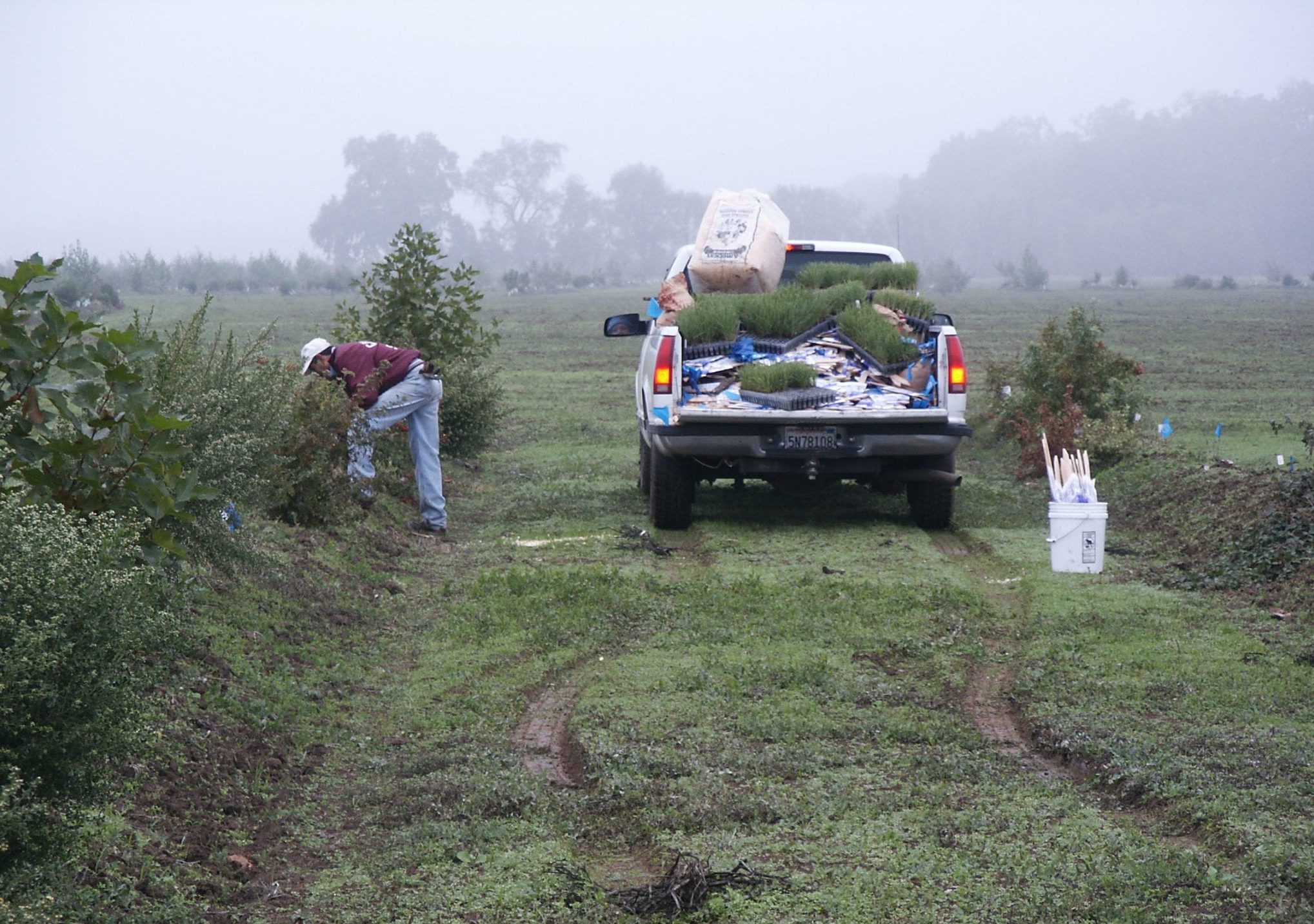
Want to know more?
River Partners’ senior field manager Ruben Reynoso will discuss our ag-based practices during his presentation at the upcoming California Society for Ecological Restoration (SERCAL) “Virtual Webinar-Style Conference.” Ruben will explain River Partners’ restoration techniques in detail, and provide guidance for other agencies and organizations who want to learn from our 20 plus years of experience in the field. Check SERCAL’s conference schedule for details.

